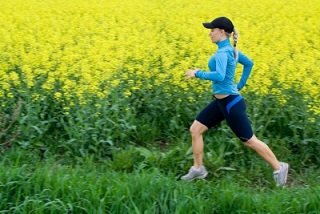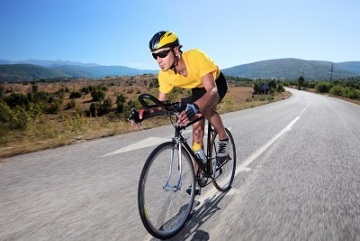Running cadence is often confused with running speed by beginning runners, but they are not the same thing. In fact, your cadence will directly impact your speed.
Knowing the difference between these two factors and how they interact with one another will make you a more efficient runner.
It will also help you develop workouts that increase your running speed, and thus your timing in the next big race.

What is Running Cadence?
The most basic definition of cadence is the number of times that your feet touch the ground in a minute.
This can be counted as individual steps with each foot landing counting as one. It can also be counted in cycles with one landing on each foot making up a cycle. The more footfalls you get in a minute, the faster your cadence.
This is easily confused with speed, but it is actually a major factor that drives your running speed. You have to separate the speed out from the physical force powering your body to obtain that speed.
Your cadence is the physical extension and pull of your leg and the landing of your foot pushing off the ground to propel your body forward. The faster you rotate your legs through this motion, the higher your cadence and the faster your running speed.
Running cadence is not the only thing that contributes to your overall speed. Your running technique and the way you move your arms can contribute as well.
What’s the Big Deal?
So, why is your running cadence a big deal? Why can’t you just focus on speed to make it simpler?
Cadence is important because it is how you efficiently improve your running speed.
It is how you perfect the technical aspects of your run so you look like a professional soaring over the pavement or through the trails, rather than an amateur barreling through the path awkwardly.
If you could take those professional runners you see in marathons and triathlons and measure their cadence, you would find that those that look the most graceful in the race maintain a faster cadence than the others.
This graceful appearance that makes running look so easy is a direct result of turning the feet over faster while running.
Those who don’t know about cadence will often try to improve speed by reaching out further with their legs.
Rather than going for shorter strokes that turn over faster, they try to cover more ground by stretching every leg stroke. This results in longer steps and a slower running cadence. That is not ideal when you are trying to run faster.
If you aren’t running professionally and have no intention to ever win a race, then running cadence may be something you never worry much about.
If you have the desire to become the best runner possible, then it is something you must work on.
Workouts to Improve Running Cadence
The best workout for improving running speed is bicycling. Studies have found that a faster revolution of the pedals on a bike brings about a faster cadence when running.
There have been studies on triathletes that have shown those that pedal faster during the biking phase of the race actually run faster and have a faster cadence in the running phase of the race.

When you compare the motions, pedaling a bike is actually very similar to running on flat ground. You have the same circular motion of the legs, but you don’t bear down on the ground at the bottom of the motion when pedaling a bike.
Try getting on a bike and pedaling as fast as you can for fifteen or twenty minutes then going out for a run. You may notice that your legs naturally start to hit the ground in a faster cadence.
This essentially means your feet spend less time in contact with the ground. Just as pedaling a bike, your feet go down and right back up in a circular motion. It is this faster lift off the ground and less time in contact with the ground that makes for a faster cadence.
If you are really serious about developing workouts that improve your running cadence, consider purchasing a tempo counter.
These devices actually count your footfall for you, making it much easier to monitor your cadence. You will hear a beep that signals when your feet should be hitting the ground. With this as a guide, you can train yourself to run at different cadences.
If you are a marathon runner, then you want a cadence of over 90. You can train for that by doing intervals with faster and slower cadence settings on your tempo counter.
A perfect cadence is just one aspect of developing your running speed. My running tips will give you many more advantages you don’t want to ignore!
Return from Running Cadence to Running Tips
Return to Marathon Training Tips home
